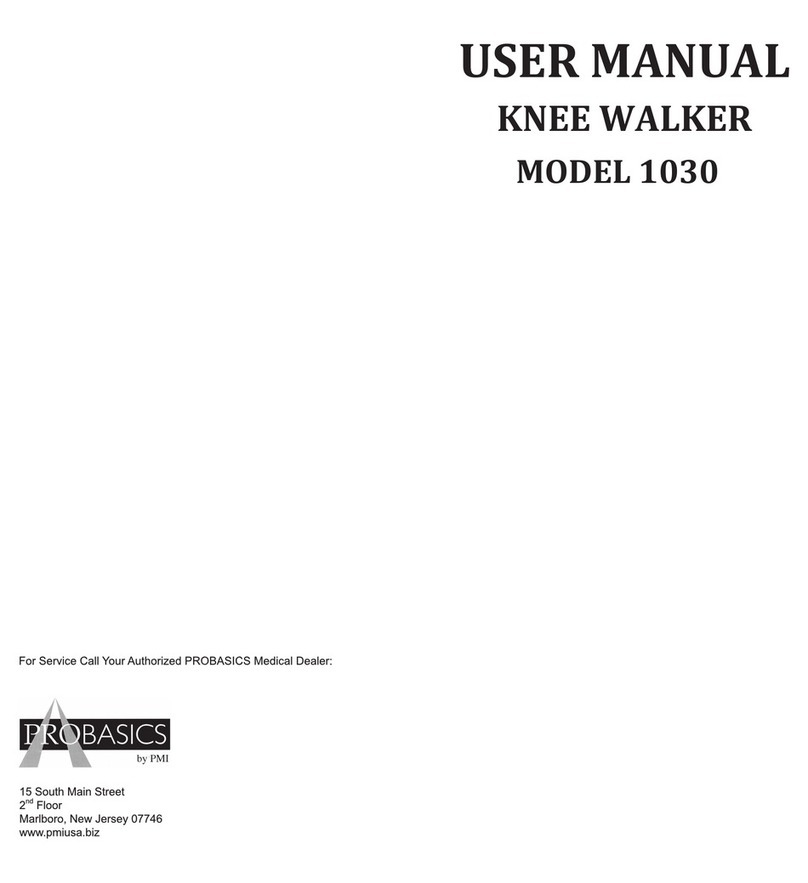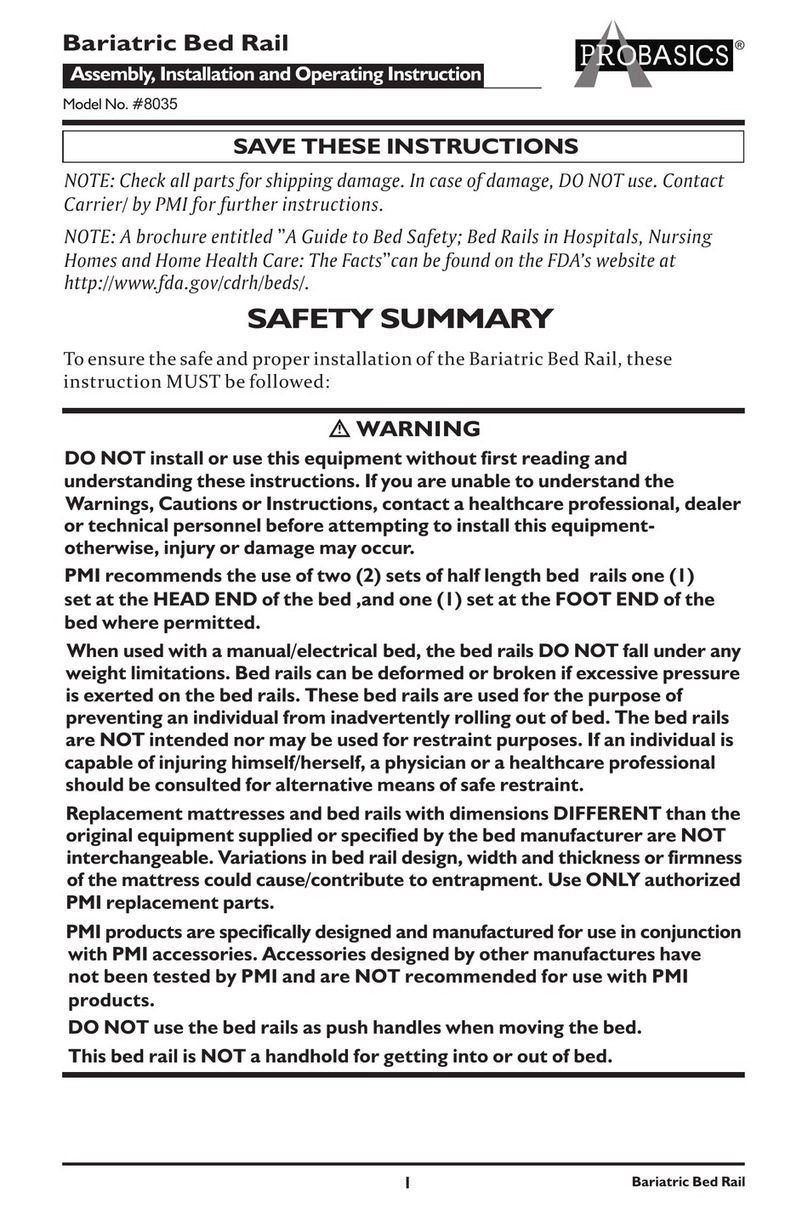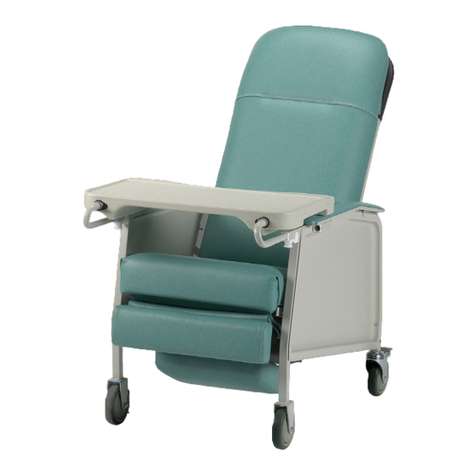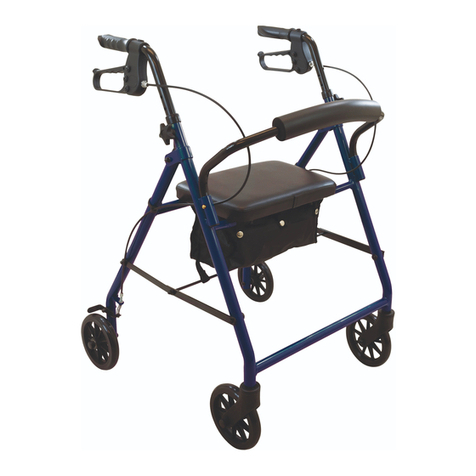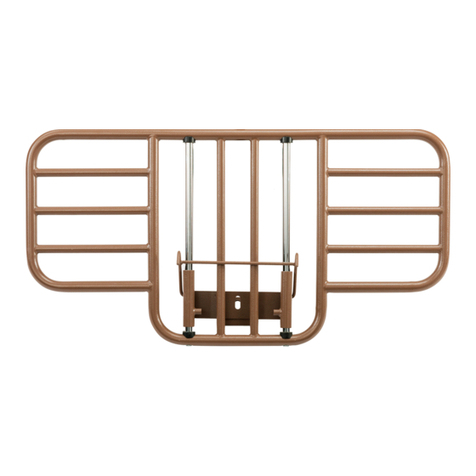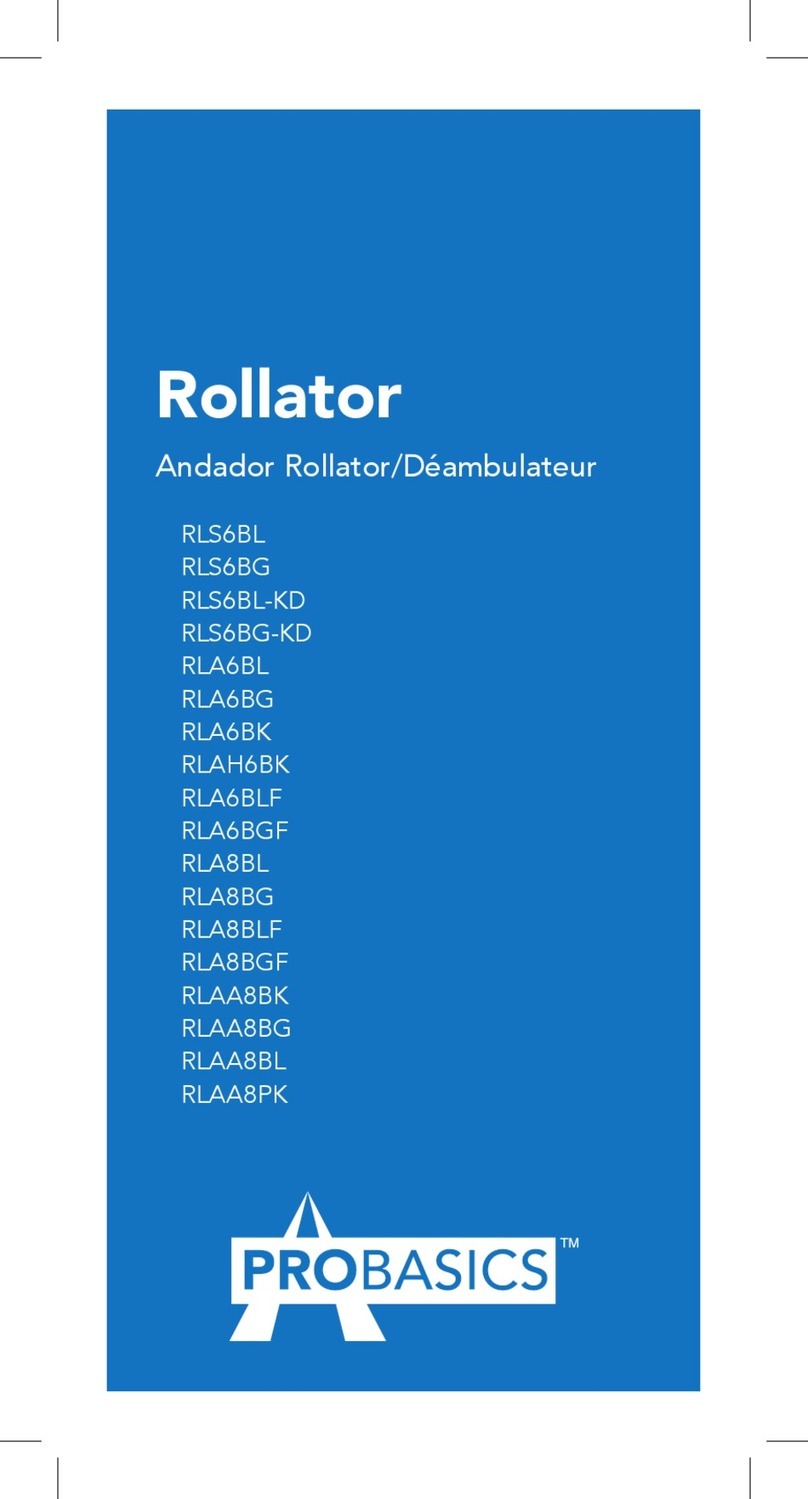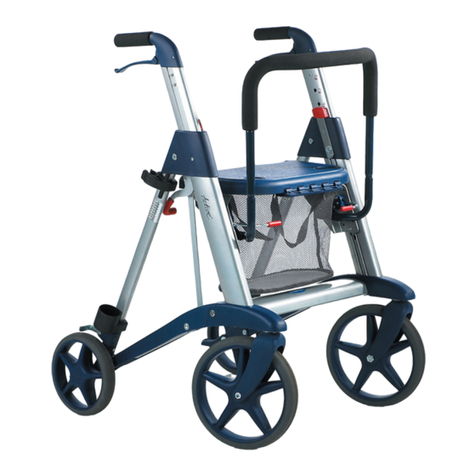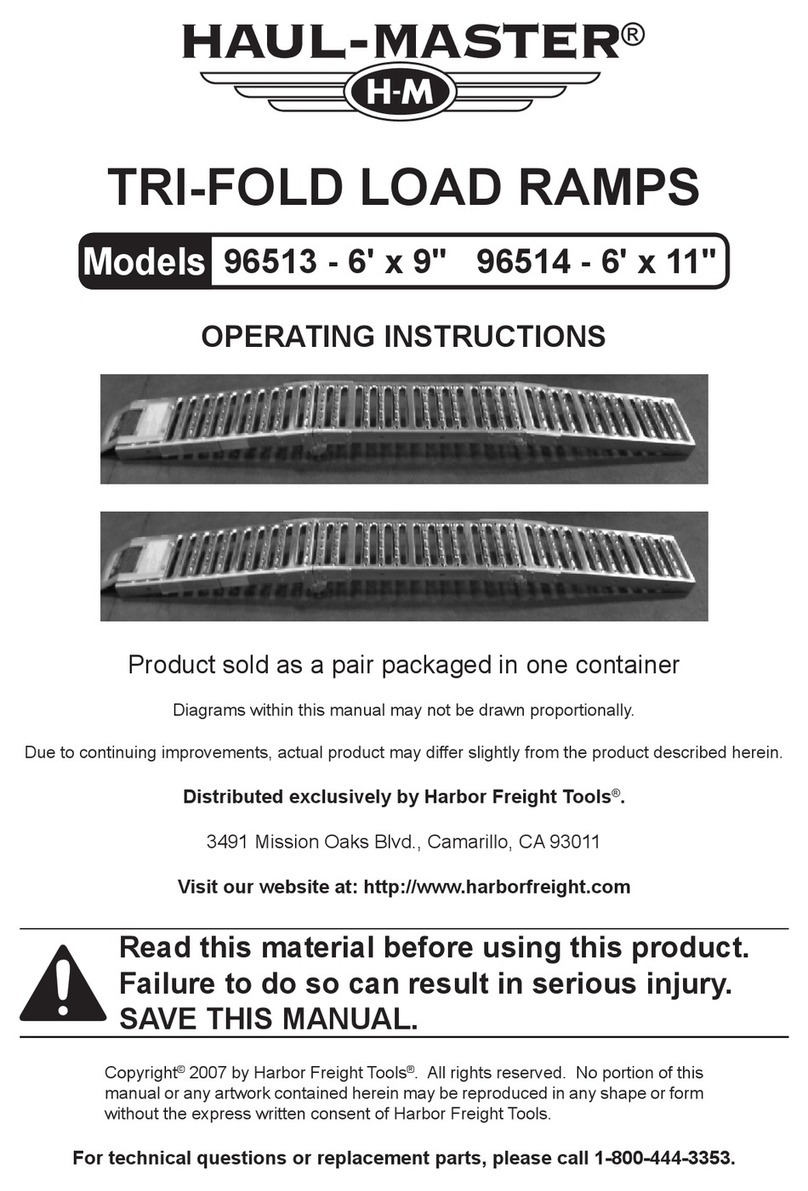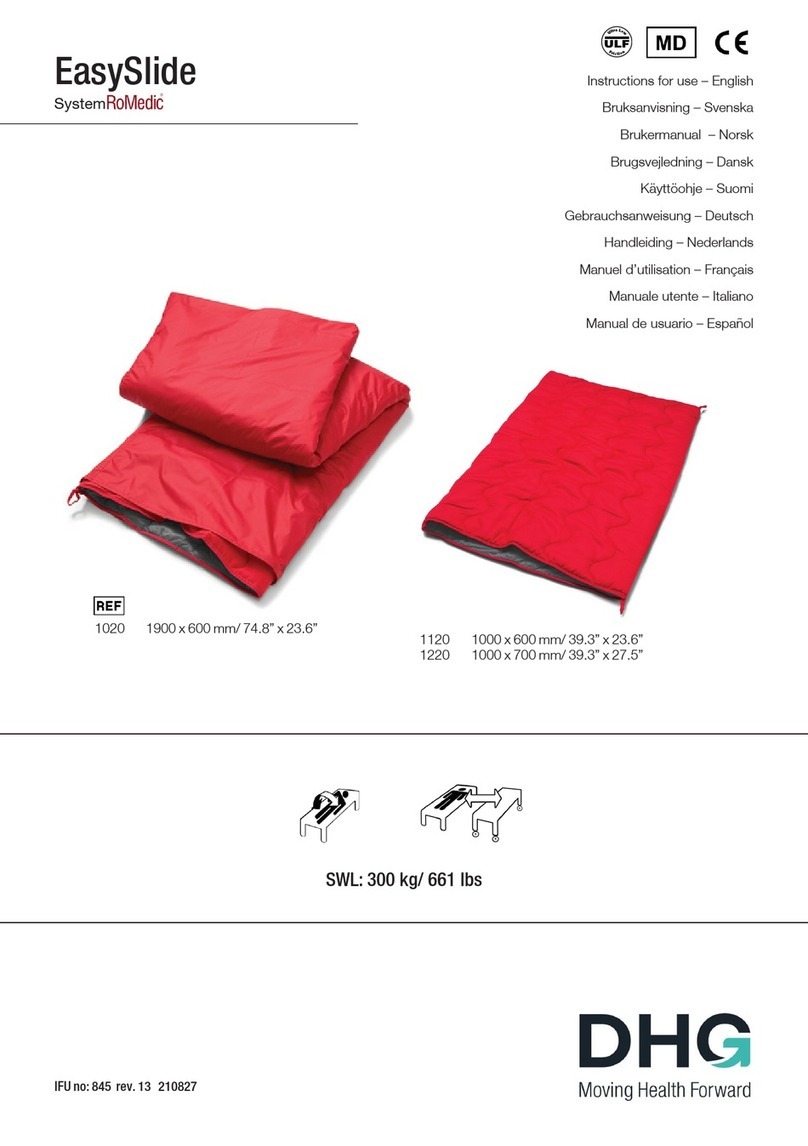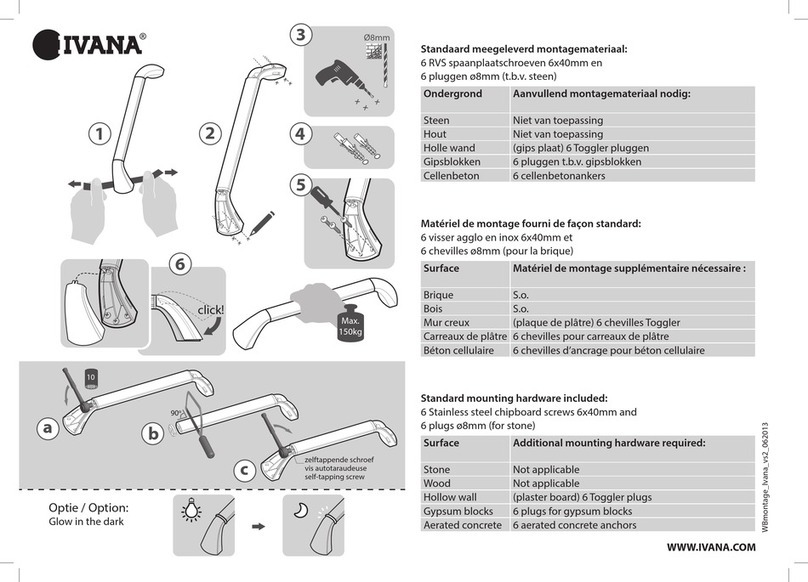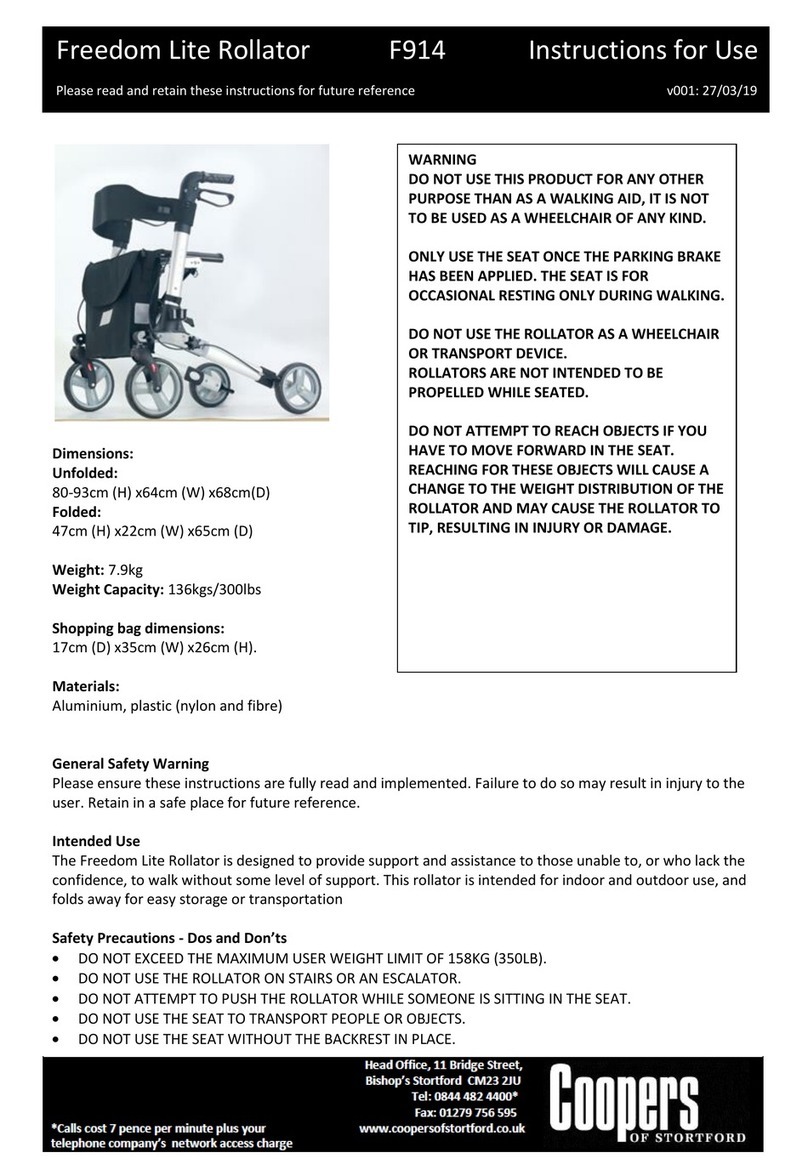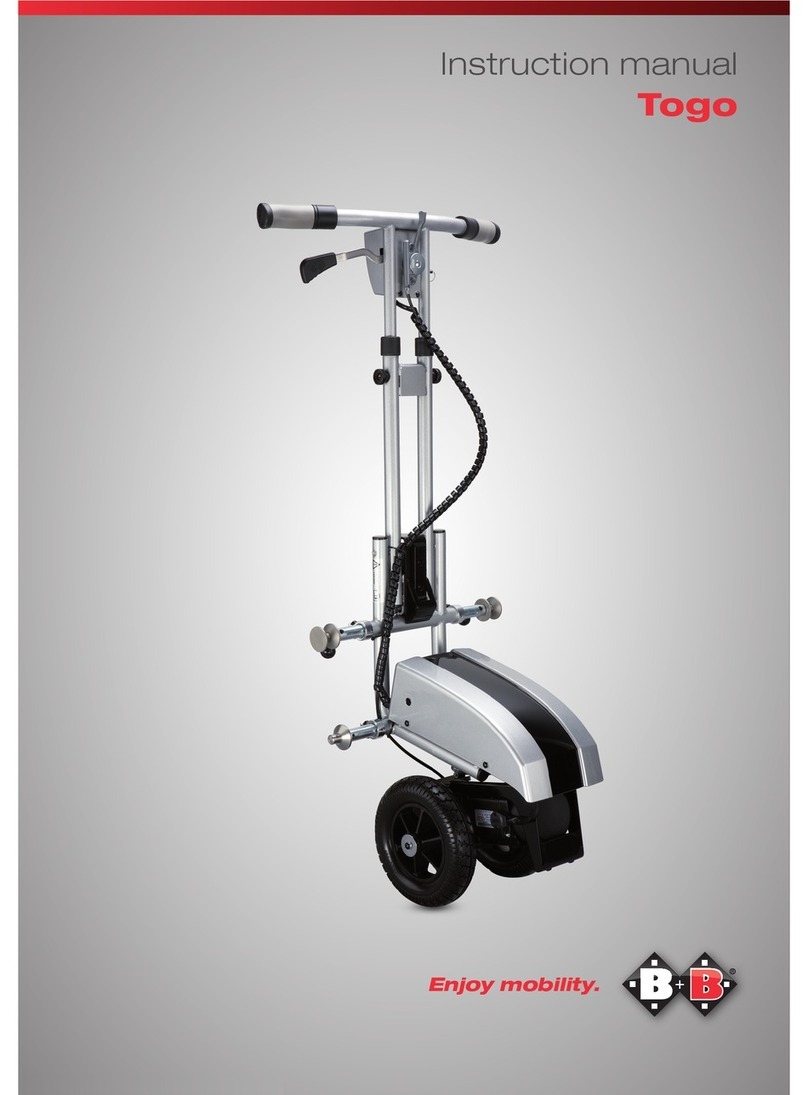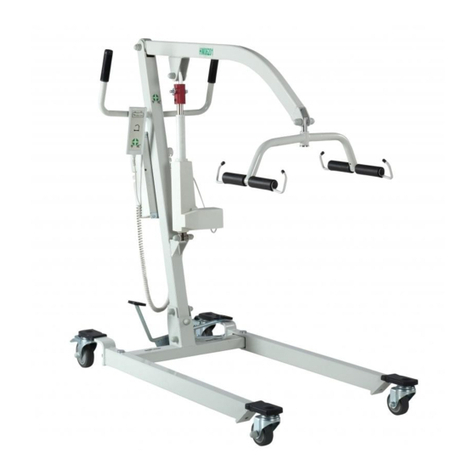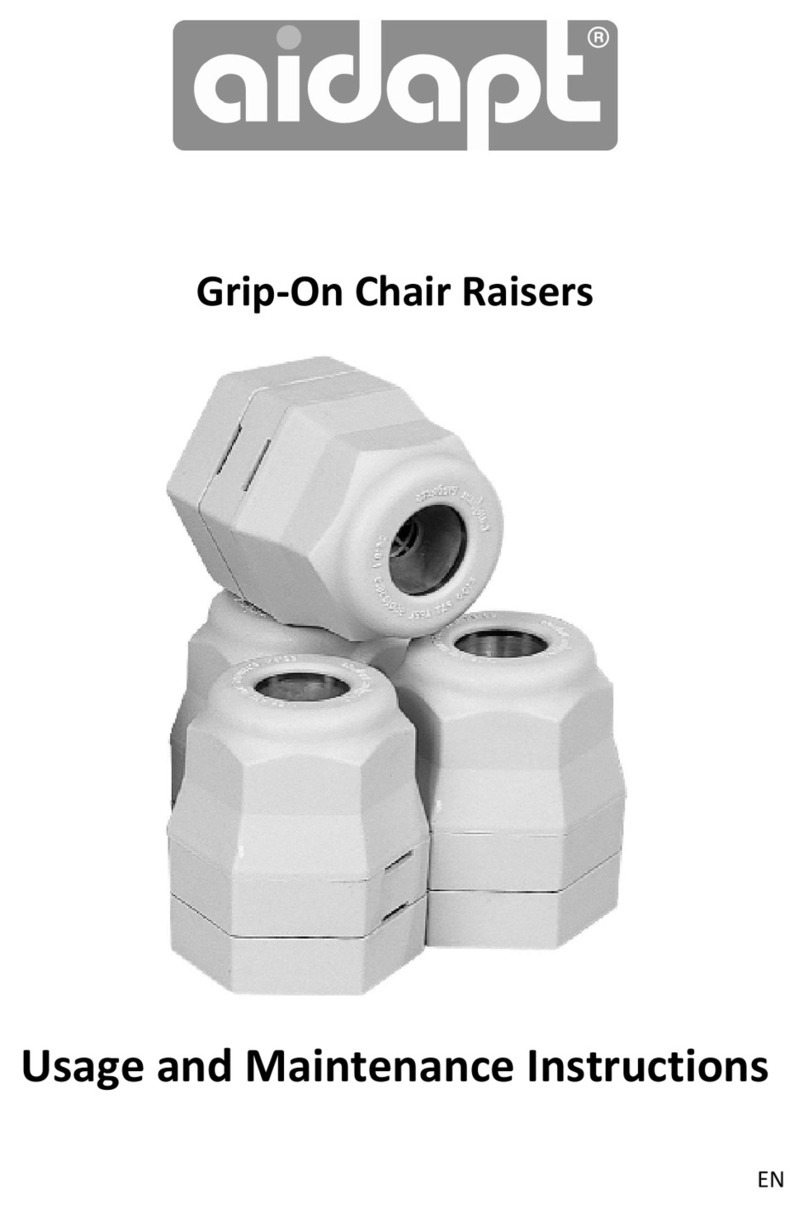
9
• This rollator should NEVER be used inside a moving vehicle
as a walking aid or seat.
• ALWAYS INSPECT ROLLATOR PRIOR TO USE. Properly
inspecting and maintaining your rollator can reduce the risk
of injury. Make sure that all parts are secure and are in good
working order. ALWAYS check the fasteners, wheels, brakes,
and seat for tightness prior to use. Make sure the parking
brakes are working, and the rollator wheels cannot turn with
the brakes on. If rollator is not in good working order or
fasteners cannot be tightened, DISCONTINUE USE OF THE
ROLLATOR and replace.
• ALWAYS wear protective footwear while using the rollator.
ALWAYS keep shoelaces, loose clothing and/or accessories
clear of the wheels and handlebars during use.
• ALWAYS make sure the rollator is fully opened and the
folding bar is locked in the down position before use.
• ALWAYS maintain good posture while using the rollator.
When walking with the rollator, keep your feet in line with the
rear wheels, and DO NOT let the rollator get too far in front
of you. When sitting on the rollator, keep both feet in contact
with the oor and DO NOT lean out of the seat.
• BE AWARE of your surroundings when operating the rollator.
Look for hazards and avoid them. Avoid streets and surfaces
with water, sand, gravel, dirt, leaves, and other debris. Wet,
slick, uneven, and/or rough surfaces may impair traction and
contribute to possible accidents. Loose cords and unsecured
rugs may move suddenly and cause a loss of balance.
DO NOT use a rollator in mud, ice, or puddles.
• NEVER use near steps, sloped driveways, hills, and/or ramps
with a steep incline (NEVER greater than 15 degrees).
DO NOT walk backwards down a slope.
• DO NOT use stairs or escalators while using the rollator.
DO NOT use near swimming pool areas.
• ALWAYS take additional care and move slowly when moving
from carpeted to hard surface oors or cracks/separations in
walk way surfaces; avoid bumps, drainage gates, and sudden
surface changes. Rollator may abruptly stop if a wheel
becomes wedged.
• DO NOT use the rollator to pull yourself up from a chair or
other seated position. Use the arms of the chair to support
your weight as you stand.
• DO NOT sit on the rollator if it is parked on a slope. Only use
the seat on level ground.
• DO NOT “plop” and/or drop all body weight immediately
into the rollator. Ease gently into the seat.
WARNINGS




















